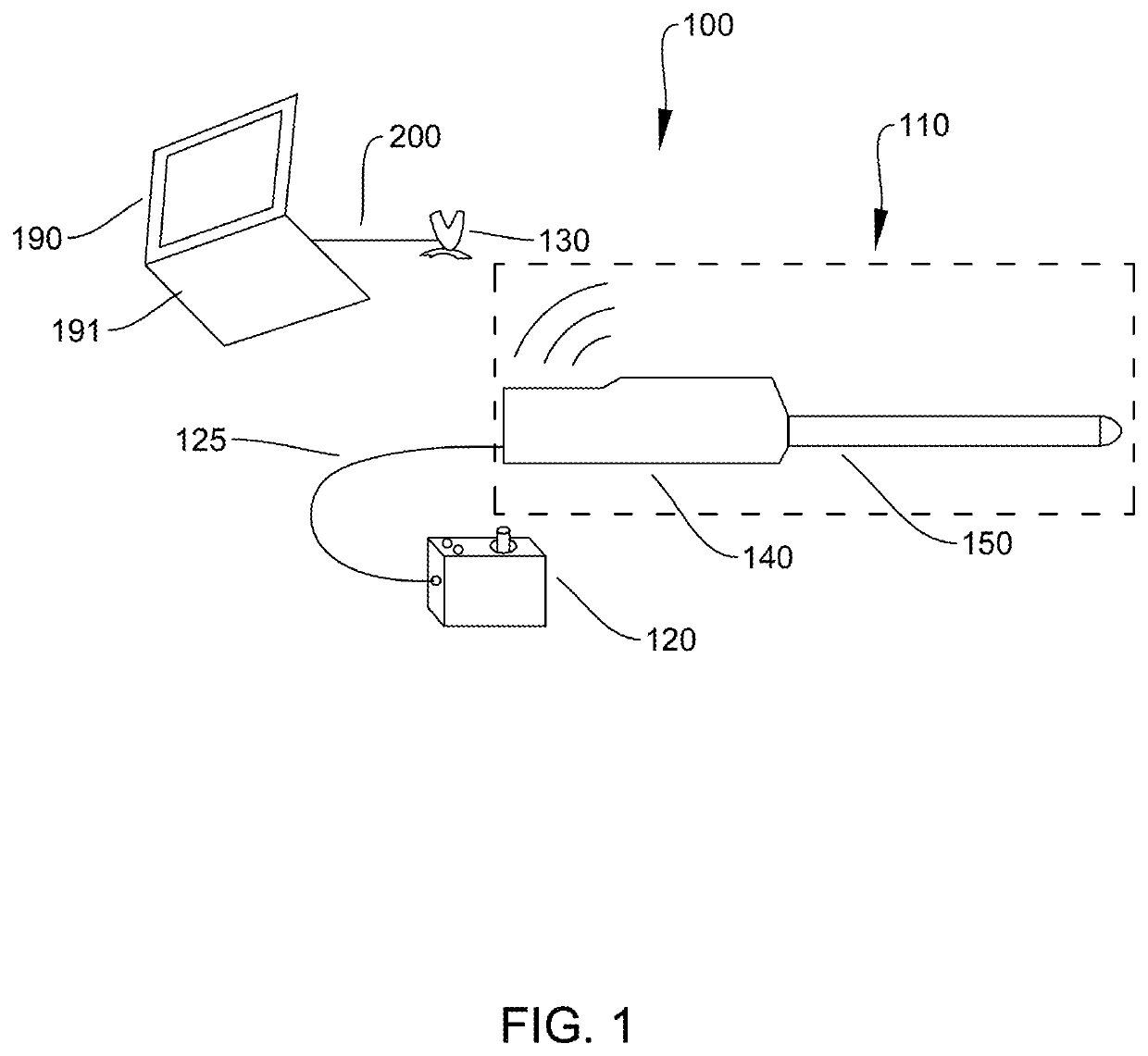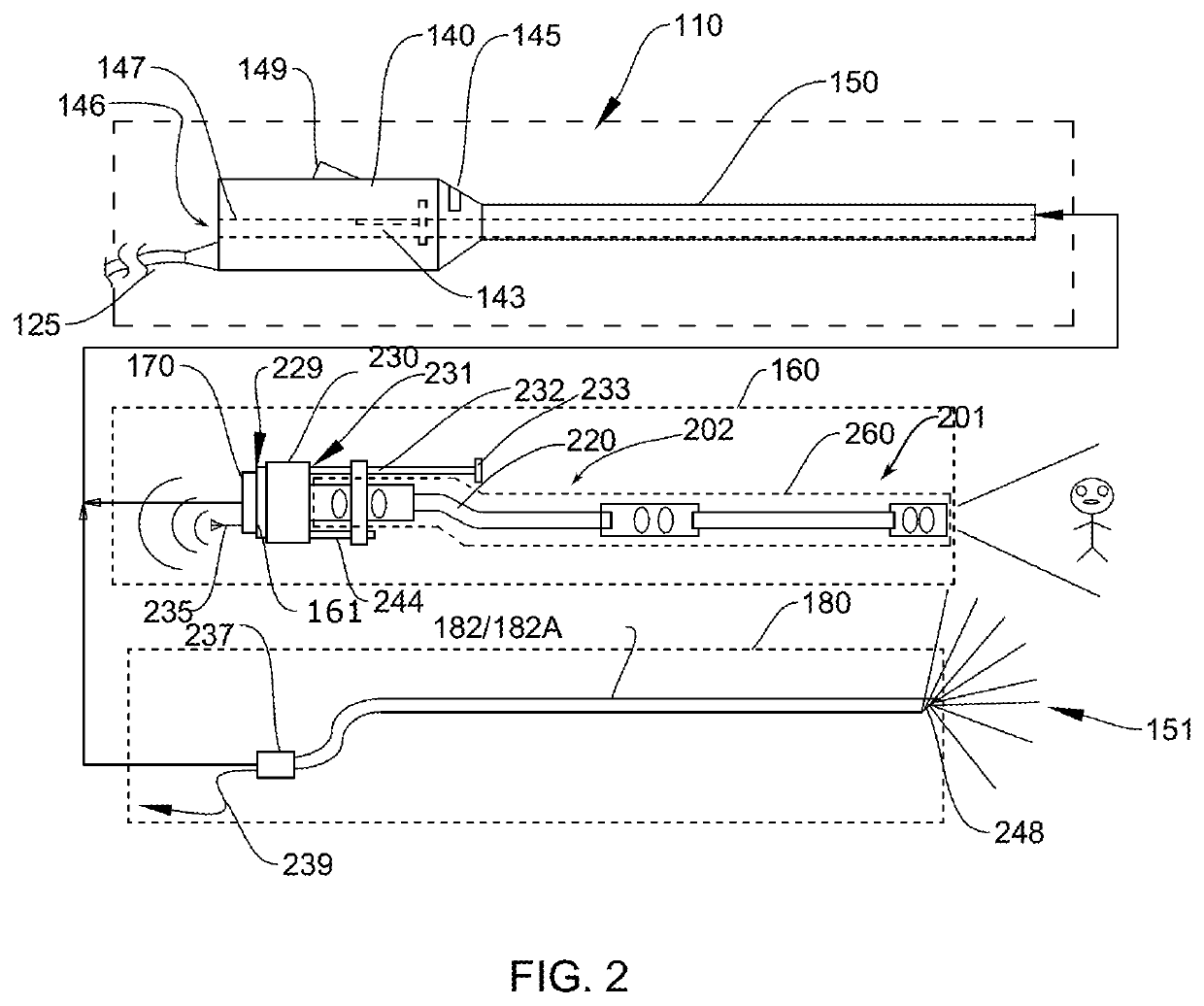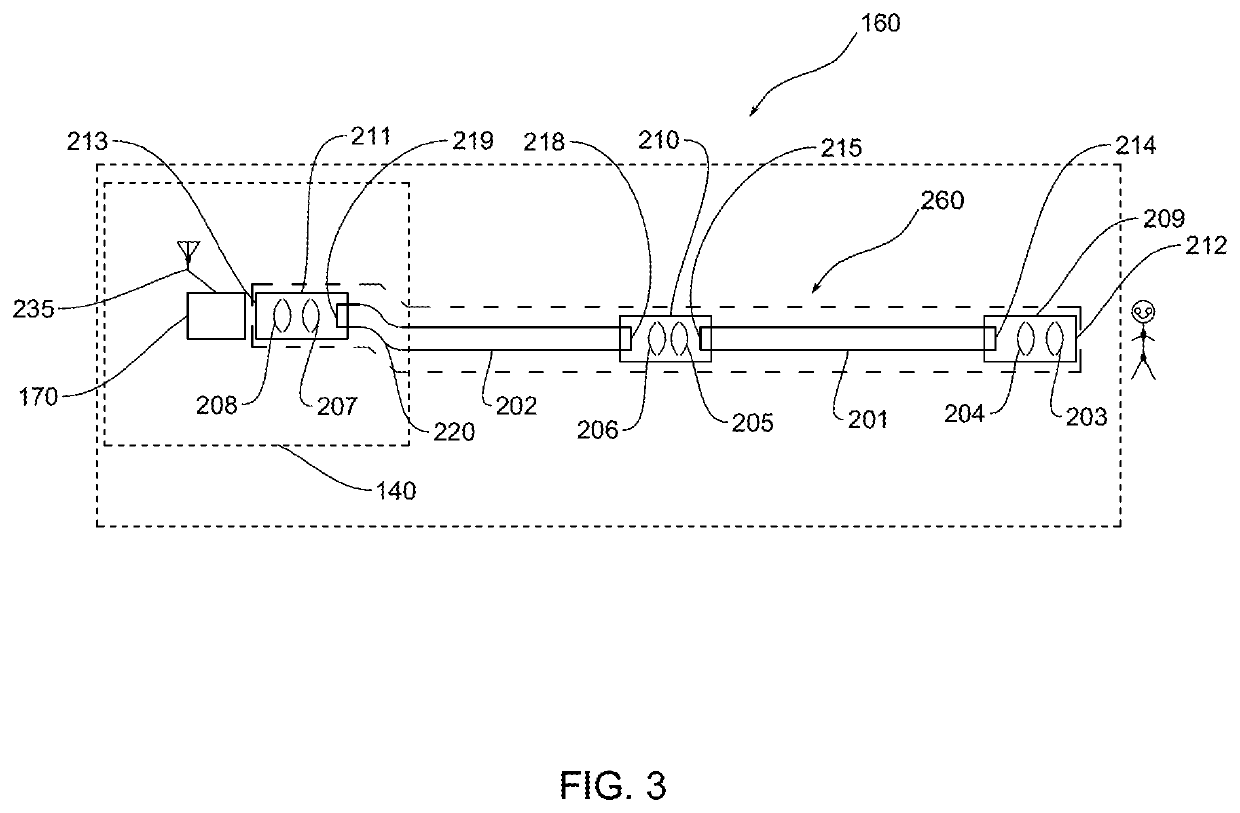Wireless endoscopic surgical device
a surgical device and endoscope technology, applied in the field of minimally invasive surgical and interventional endoscope devices and methods, can solve the problems of tool breakage, decreased popularity of techniques, compounding challenges, etc., and achieve the effect of reducing bending stress
- Summary
- Abstract
- Description
- Claims
- Application Information
AI Technical Summary
Benefits of technology
Problems solved by technology
Method used
Image
Examples
Embodiment Construction
[0035]100 EN system[0036]110 EN device[0037]120 PCM[0038]125 Cable[0039]130 Receiver[0040]140 Handle[0041]143 T-slot[0042]145 Cutout[0043]146 Tool port[0044]147 Tool bore[0045]149 Ventilation openings[0046]150 Conduit[0047]151 Tip[0048]160 Imaging module[0049]161 lens[0050]170 camera[0051]180 Light module[0052]182 waveguide pipe[0053]182A optical fiber bundle[0054]182B Circumferential single fiber bundle[0055]190 Monitor[0056]191 Base[0057]200 Data cable or data line[0058]201 Distal CF bundle[0059]202 Proximal CF bundle[0060]203-208 Optic elements[0061]209-211 Dual-lens housings[0062]212 Distal Imaging assembly (IA) end[0063]213 Proximal IA end[0064]214 Distal CF bundle distal end[0065]215 Distal CF bundle proximal end[0066]218 Proximal CF bundle distal end[0067]219 Proximal CF bundle proximal end[0068]220 S-curve[0069]229 Coupler[0070]230 Focus system[0071]231 Imaging Plate[0072]232 Wheel shaft[0073]233 Focus wheel[0074]235 Antenna[0075]237 LED[0076]238 Heat sink[0077]239 wiring[00...
PUM
 Login to View More
Login to View More Abstract
Description
Claims
Application Information
 Login to View More
Login to View More - R&D
- Intellectual Property
- Life Sciences
- Materials
- Tech Scout
- Unparalleled Data Quality
- Higher Quality Content
- 60% Fewer Hallucinations
Browse by: Latest US Patents, China's latest patents, Technical Efficacy Thesaurus, Application Domain, Technology Topic, Popular Technical Reports.
© 2025 PatSnap. All rights reserved.Legal|Privacy policy|Modern Slavery Act Transparency Statement|Sitemap|About US| Contact US: help@patsnap.com



